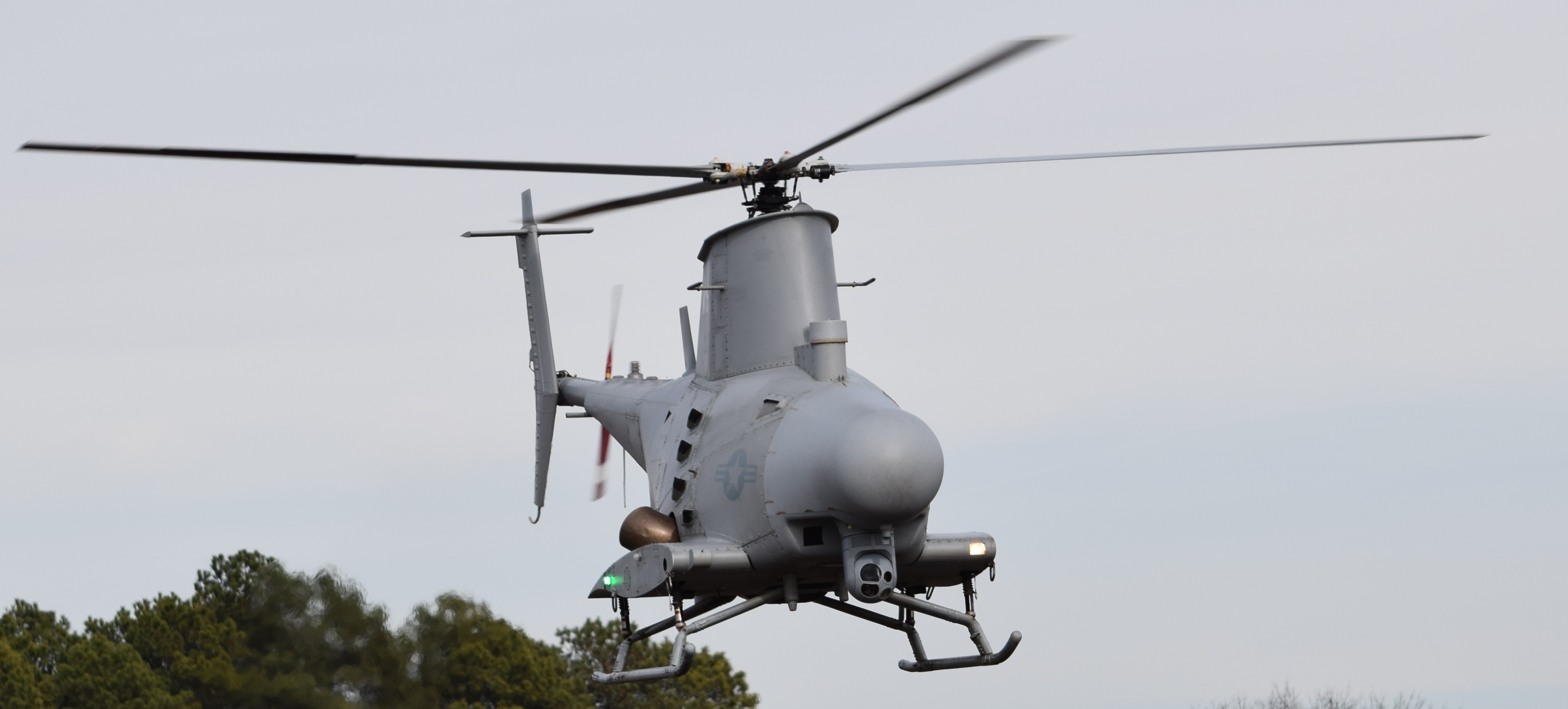
WASHINGTON NAVY YARD – The Navy completed the first phase of its initial operational test and evaluation on the AN/DVS-1 Coastal Battlefield Reconnaissance and Analysis (COBRA) airborne mine detection system and is awaiting Littoral Combat Ship availability to complete the remaining testing.
COBRA is a sensor payload that operates onboard the MQ-8B Fire Scout and can detect beach zone mines in the daytime to help plan amphibious landings. An eventual block upgrade would add nighttime and surf zone detection capabilities.
COBRA wrapped up its IOT&E Phase 1 at NASA’s Wallops Flight Facility this summer, and the Navy declared initial operational capability on July 31, Sam Taylor, mine warfare senior leader at the Program Executive Office for Littoral Combat Ship, told USNI News in a Sept. 28 interview. Using air vehicle operators and mission payload operators from Air Test and Evaluation Squadron (VX) 1, maintainers from Helicopter Sea Combat Squadron (HSC) 21 and operators from USS Independence (LCS-2) and the LCS Squadron (LCSRON) 1, the LCS program proved to the Operational Test and Evaluation Force that COBRA can effectively and reliably meet its mission requirements.
“Right now, in order for us to do the kind of reconnaissance you need in advance of an amphibious landing, you’ve got to put sailors and Marines, you’ve got to put somebody in there with eyes on target to see what’s there, see if there’s any obstacles. People are involved in it,” Taylor said.
“With this capability, you’re able to go from the LCS with an unmanned vehicle, you’re able to recon a whole line of beach – not just one or two areas, you can look at the whole beach, you can look at all the lanes that are possible without putting somebody there – which allows you to come back and look at that and choose which lane or lanes are available and which are not.”
Data from COBRA will be sent to the amphibious landing force through the Joint Direct Attack Munition (JDAM) Assault Breaching System (JABS), which could either direct a JDAM air assault on the beach to clear mines or could feed the location of mines to the precision navigation and lane marking systems on the amphibious vehicles coming ashore. COBRA can also feed the data through the LCS to other components of the mine countermeasures mission package, including to systems that can neutralize the mines COBRA located.
Taylor said IOT&E Phase 1 included 21 flights that covered sandy beaches, partial vegetation and full vegetation; different mine types; and different mine densities in the water, including some runs with no mines in the water at all. The Navy’s operational testers are still scoring the event, but an initial impressions letter declared COBRA’s performance adequate to meet operational requirements.

Four IOT&E phases remain: one will require COBRA to operate on an LCS at sea to prove the Fire Scout unmanned vehicle and the operators can successfully deploy and run the system while other shipboard activities take place; a maintenance event will require time aboard a LCS in port to prove the system can be maintained on a ship and the supply and logistics chains are ready for on-ship operations; and two cyber-related tests will also have to take place on a ship in port.
Taylor said these events will likely take place on Independence, which is now the lead mine countermeasures test platform in a four-ship test squadron in San Diego. However, several other mission package systems need shipboard time for testing too, and Taylor said the COBRA tests are ready to go as soon as they can get on the ship’s schedule. He said the Navy hopes to conclude all COBRA IOT&E events by mid-FY 2018.
In the meantime, the Navy bought two systems in Fiscal Year 2017 and will continue to buy more as quickly as budgets allow. Taylor said the Navy intends to first outfit the squadrons with six systems, so operators can become proficient with COBRA. Then the mission packages that will deploy aboard ships will be outfitted – the Navy currently plans to buy 24 mission packages, he said, so the plan is to buy 24 additional COBRAs, for a total of 30. Each system, made by small business Areté Associates, includes two COBRA Payload Sub-systems that attach to the Fire Scout and one post-mission analysis station to go on the LCS.





